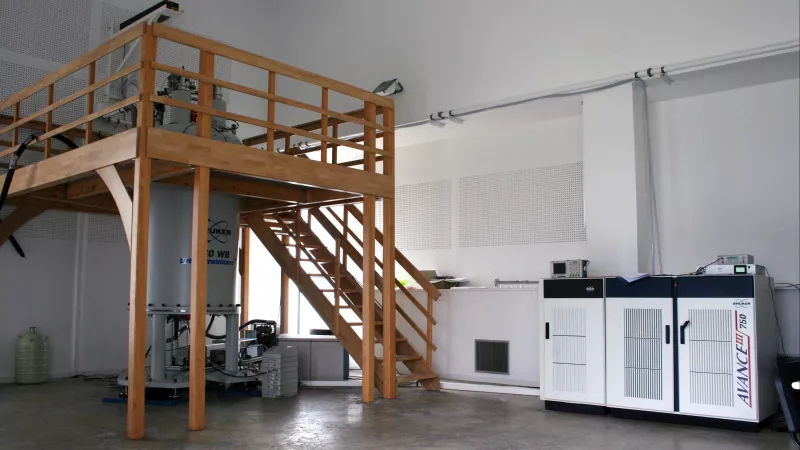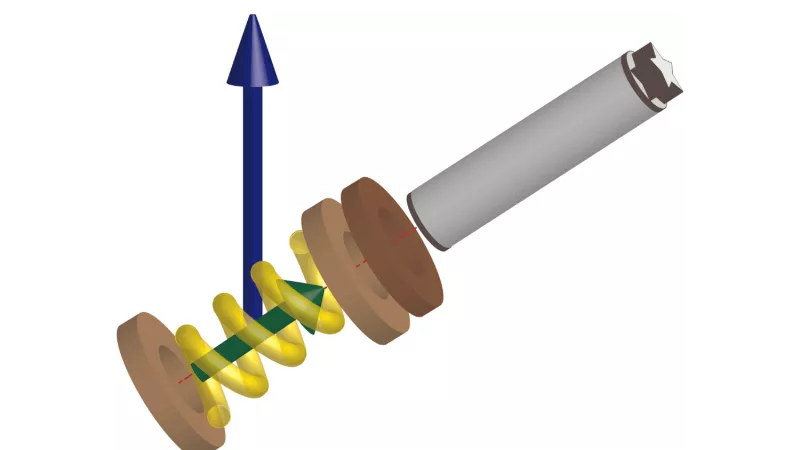NMR analytical platform
Nuclear Magnetic Resonance is a spectroscopic technique for the observation of nuclear spins. The spin of a nucleus, placed in an intense magnetic field, can be manipulated with the help of resonant radio-frequency waves, and the response of the spin system gives a lot of information on the chemical environment (nature of the neighbors, oxidation state...) of the nucleus of the atom in question. Many nuclei are observable in NMR, including 1H (observed in MRI and widely used in organic chemistry), 13C, 7Li and 6Li, 23Na, 31P, 19F, 27Al... However, if the observation of fine and well-resolved signals is easy in a liquid, the study of solids requires to overcome anisotropic interactions, i.e. which depend on the orientation of the sample in the magnetic field. Therefore, NMR of solids uses the rapid rotation of the sample (several tens of thousands of revolutions per second) at the magic angle (54.7° with respect to the field), which allows to refine the peaks observed on the spectrum and to obtain the most accurate response possible.
Accessible information is the existence (the quantification) of present phases (amorphous or crystalline), the number of inequivalent sites and theirs populations in different structures of a sample, the dynamism of mobile species (exchange between sites, residence time in sites, auto-diffusion coefficient) in function of the temperature. We can also obtain the spatial maps of proximity between different nuclei in the favorable cases. The necessary sample quantity goes from 1 mg for the most sensitive nuclei to some hundreds of mg for the least sensitive. The platform has a glovebox to manipulate (dry) components sensitive to air.
The use of magnetic field gradients also allows the measurement of coefficients at the micrometer scale, or to localize the position of spins in the sample and thus to perform spectroscopic imaging of the system (MRI principle).
Equipment and human ressources
- Funded by the RS2E
- 200 MHz spectrometer, MAS probes 4 and 1,3 mm with double resonance 1H-19F/31P-15N
- Other funds
- Complementary equipment for diffusion funded by the CEMHTI
- Human ressources
- 1 CNR researcher : Elodie Salager
- 1 Prof. : Michaël Deschamps
- 1 postdoc, 1 Phd student

